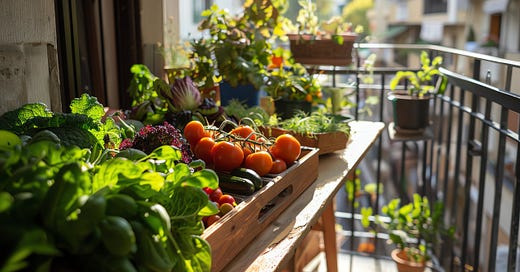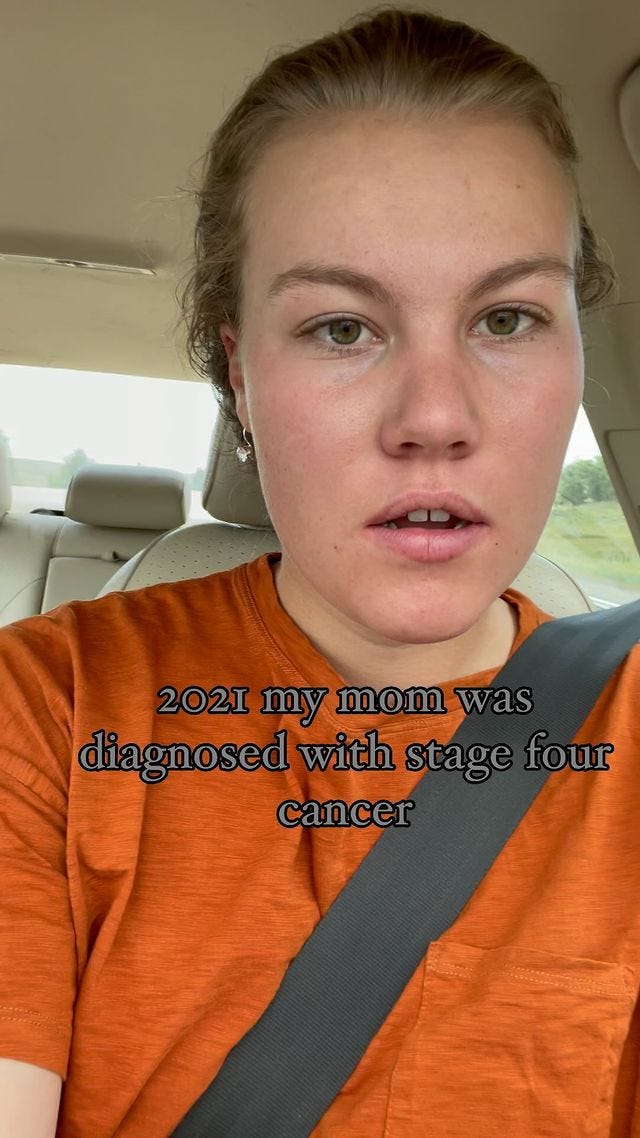America’s Farmland Is Disappearing.
Start doing this today and protect yourself against "Big Farma."
In 10 years, the “American Farmer” will no longer exist.
According to the National Council of Real Estate Investment Fiduciaries, the amount of farmland bought by investment firms is up 231% from 2008 to 2023
In 2020 → investment firms owned $9.2 billion worth of farmland.
By 2024 → firms now owned more than $16.6 billion.
That’s $16.6 billion in America’s beautiful farmland gone from the market. Control over this land has passed to people with little personal connection to it, who live a thousand miles away.
The investment firms will decide what happens to our farmland, whether to plow or drain it, or even to stop farming it entirely. Their decisions will have profound effects on rural communities, wildlife and even the global climate.
As older generations of farmers retire, about $24 trillion worth of land will soon be up for sale. But this trend from “Big Farma” could lock many families out of farming and shift control of our food to large, profit-driven companies.
There’s a deeper reason why people should notice this.
In the next 20 years, more modern families will need to become farmers— whether by choice or by necessity. As global supply chains break down, AI tech eliminates jobs & entire industries, and the health of our soils in decline, we need to learn how to support ourselves in times of crisis.
Imagine a future where a simple skill like backyard gardening becomes essential, not just for your own personal food security, but for the health and resilience of our local neighborhoods.
The Shift in Farmland Ownership
Today, most American farmers are over 60.
Many are retiring or selling their land, often with no one to pass it on to. In previous generations, farmland stayed in families, but that trend is changing. Younger generations are less interested in manual labor, and more interested in digital wealth…
And I can’t blame them either.
Right now, I’m writing this article, and my words will reach tens of thousands of people. The blessing and curse of technological advancement, means that the generation behind us will be forced to learn new suvival skills just to “keep up.” Our kids don’t want to work outside in a field, when they could earn millions streaming or playing videos games for 8 hours a day.
This cultural shift compounds over time— for better or worse.
Without younger family members to take over, farmers have no other option but to take the biggest all cash deal that comes their way. It’s the retirement plan they broke their bodies for…and they deserve every dollar that comes from that hard labor.
The opportunity cost here is significant.
If everyday Americans want to see local, sustainable food production survive, we need to act—and soon.
Why Small Farms Matter for Resilience
Small, family-run farms are vital for more than just food production. They preserve farming traditions, maintain soil health, and support local economies.
Chloe is the 22 year old CEO of Parker Pastures, a grass fed beef supplier.
I saw this instagram reel, and felt compelled to share her story.
Chloe is 1 of so many unsung heroes.
She’s changed the way her family farm markets, sells, and distributes their products…helping the older generation adapt to the digital economy. The would have otherwise eventually be forced to sell or shut down.
In addition, Chloe’s content exposes the truth about Big Farma and the dirty tricks the meat industry giants use to poison our food supply.
With every acre that gets sold to a fund or firm, an important part of our US cultural history dies with it. We lose the local knowledge, the seasonal rhythms, and the sustainable practices that keep that piece of land in its natural state.
If we let our farms disappear, we risk losing 250 years worth of agricultural knowledge.
Our Future is the “Farmstead.”
In November 2024, we’re staring at a potential strike with our local shipping ports.
The effect of this strike would mean a full stop on our importas. This creates a massive decrease in supply, with a massive increase in store prices for everyday products - baby supplies, home goods, imported foods, and other essentials we take for granted. The need to protect our families against unseen situations like this are blatantly obvious.
Here’s why in 20 years we’ll all return to small-scale & backyard farming:
Supply Chains are Unstable
Over recent years, supply chain disruptions have exposed how fragile global food systems can be. When just one part of the chain breaks—whether due to climate events, trade issues, or logistics bottlenecks—it becomes an attack on our wallet. Relying on locally grown food protects us from these interruptions, giving families direct access to fresh produce no matter what’s happening globally.AI and Automation Will Change Employment Forever
With AI technology replacing traditional jobs, more people may find themselves needing alternative ways to put bread on the table. The labor economy is moving from “career-driven” to “project-based” work. Growing food is one such project. It is both an income stream and a practical way to meet basic caloric needs without relying solely on what’s available at the grocery store.Soil Health is Declining
Decades of industrial agriculture have left much of the world’s soil depleted. Large-scale, mono-crop farming often relies heavily on chemical fertilizers, which removes nutrients from the soil. Small-scale, diversified farms are essential for restoring soil health. When you restore your own local ecosystem, you start the Butterfly Effect of restoring bigger habitats.This video on Cedar Springs Farm is a perfect example of what happens when you focus on your own little piece of the greater whole. When we care for our own land, we’re more likely to use sustainable practices that benefit both the soil and the surrounding environment.
Home-Grown Food is Healthier
Backyard farming offers benefits that go far beyond just food security. When you grow your own food, you know exactly what’s going into it—no pesticides, no GMOs, just fresh, nutrient-dense produce. Many homegrown fruits and vegetables have higher nutrient levels than store-bought varieties, which are often picked early and transported long distances.
And they taste better! Have you ever eaten a strawberry grown in your own backyard? If not…then you don’t know what a real strawberry tastes like.Self-Reliance = Better Physical & Mental Wellness
There’s something special that happens when you learn self-reliance. It’s a natural sedative, a feeling I can’t really describe in this blog article. The skills involved in growing food—like planting, tending, and harvesting—connect us back to the soil and the sunshine. They give us a deeper sense of purpose. One that staring at a computer screen and earning a salary doesn’t do.
How You Can Start Your Farmstead Now
If these challenges resonate with you, there are practical ways to begin exploring farmland ownership or even small-scale food production:
Start with What You Have:
You don’t need a full farm to begin growing your own food. Whether you have a backyard, a community garden plot, or even just a balcony, small-scale gardening can teach you the basics. Micro-farming, vertical growing, and container gardening can yield surprising amounts of food.Talk to Local Farmers
Many farmers are open to selling or leasing parts of their land if it means keeping it productive. This is how I plan to find some acres while prices in the US are still astronomically high. Build relationships with local farmers, visiting farm stands, and expressing interest in their work can open doors to shared or low-cost land access.Look into Land Trusts and Co-ops
Community farming models like land trusts and cooperatives can make farmland ownership affordable by splitting costs and responsibilities. Some people join community-supported agriculture (CSA) programs that give them access to fresh produce while supporting small farms.Explore Government Support for New Farmers
talks about this in her substack → big fan of her work and Alexandra’s willingess to share knowledge on this topic. Check out some alternative financing methods she discusses here:
Organizations like the USDA offer programs specifically designed to help new and small-scale farmers. These include loans, grants, and technical support, often with special opportunities for young farmers and veterans.Restore Neglected Land
If you do decide to purchase or lease land, use regenerative agrictultural methods. Practices like crop rotation, composting, and cover cropping can help restore even poor-quality land, making it more productive and environmentally sustainable over time. Remember: without improving your soil health, you sacrifice your ability to grow in the future.
Building a Resilient Future Together
If you’ve ever thought about growing your own food, or if you’re worried about the future of your family...this is where you start.
Whether you’re able to buy land, lease some acreage, join a co-op, or just grow a few veggies in your backyard, you too can start acquiring the knowledge and skills of self-reliance.
Global challenges will affect us all, even the most prepared ones…
So which would you rather be:
The person with an endless supply of eggs, fruits and veggies, and a few acres to rent, hunt, or rejuvenate?
Or the person who’s left asking for government handouts and praying for change.
Support your local heroes living an Alternative Life:
bandrhomestead (YouTube) → CEO of the “Foil Hat Gang”
bloomsandgreensbychloe (Instagram) → The “Sassy” Irish Gardener
linneaandakela (YouTube) → Vanlifers & Raw Land Pioneers
stefanocreatini (YouTube) → Agricultural Explorer & Homesteader
alexandrafasulo (Substack) → Champion for the Amish (mentioned above)
cedarspringsfarm (Instagram) → Colorado Desert Farming (mentioned above)
parkerpasturesgrassfed (Instagram) → The Grass Fed CEO (mentioned above)
Alternative Living is for people interested in becoming more self-reliant, living sustainably, and giving back to the world.
Subscribe today and Start living your alternative life.
Cheers,
Ryan Hutchinson
P.S. - Help spread the word by sending this to a friend or family member:
There’s a few Surprise Bonuses for referring traffic our way!
Click here for details on the referral program & leaderboard.









This should be very thought provoking for the American farmer. Thanks Ryan!